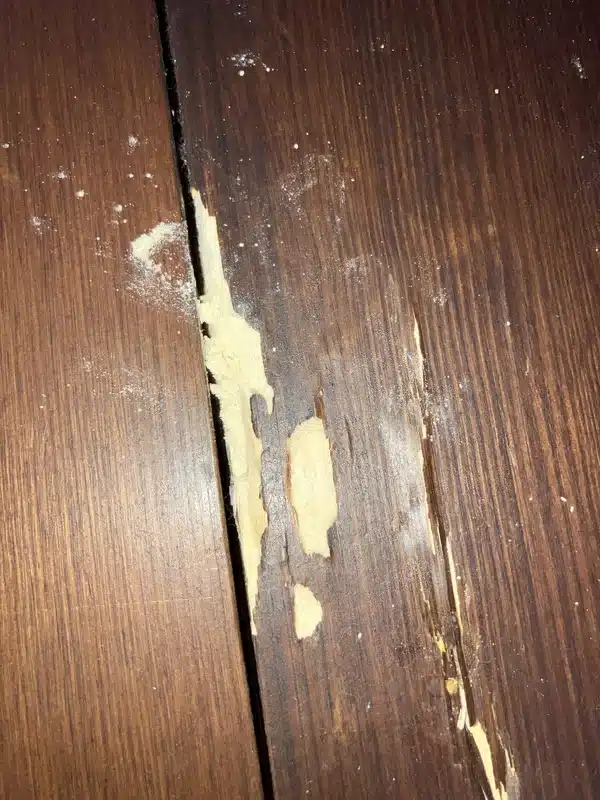Finding small holes in your wood furniture or noticing fine powder around your home’s wooden structures? You might be dealing with wood boring beetles. These persistent pests can cause serious damage to both structural and decorative wood inside of buildings, making early detection crucial.
After working in the pest control industry for four years and seeing countless wood boring beetle issues across the DMV area, I’ve learned that homeowners often mistake these insects for other pests. The key is understanding what you’re looking for and acting quickly when you spot the signs.

Common Types of Wood Boring Beetle Species
Not all wood boring beetles are the same. Understanding the different species helps you identify what you’re dealing with and choose the right treatment approach.
Powderpost Beetles
Powderpost beetles are among the most destructive wood-boring insects homeowners encounter. These small beetles create round exit holes measuring 1/32 to 1/16 inch in diameter. The fine, talc-like frass they produce sifts easily and often appears as a light coating on surfaces below infested wood.
These beetles prefer the sapwood of hardwood species like oak, hickory, and ash. Adult beetles emerge from wood during spring and summer months, leaving behind the telltale round exit holes that give away their presence.
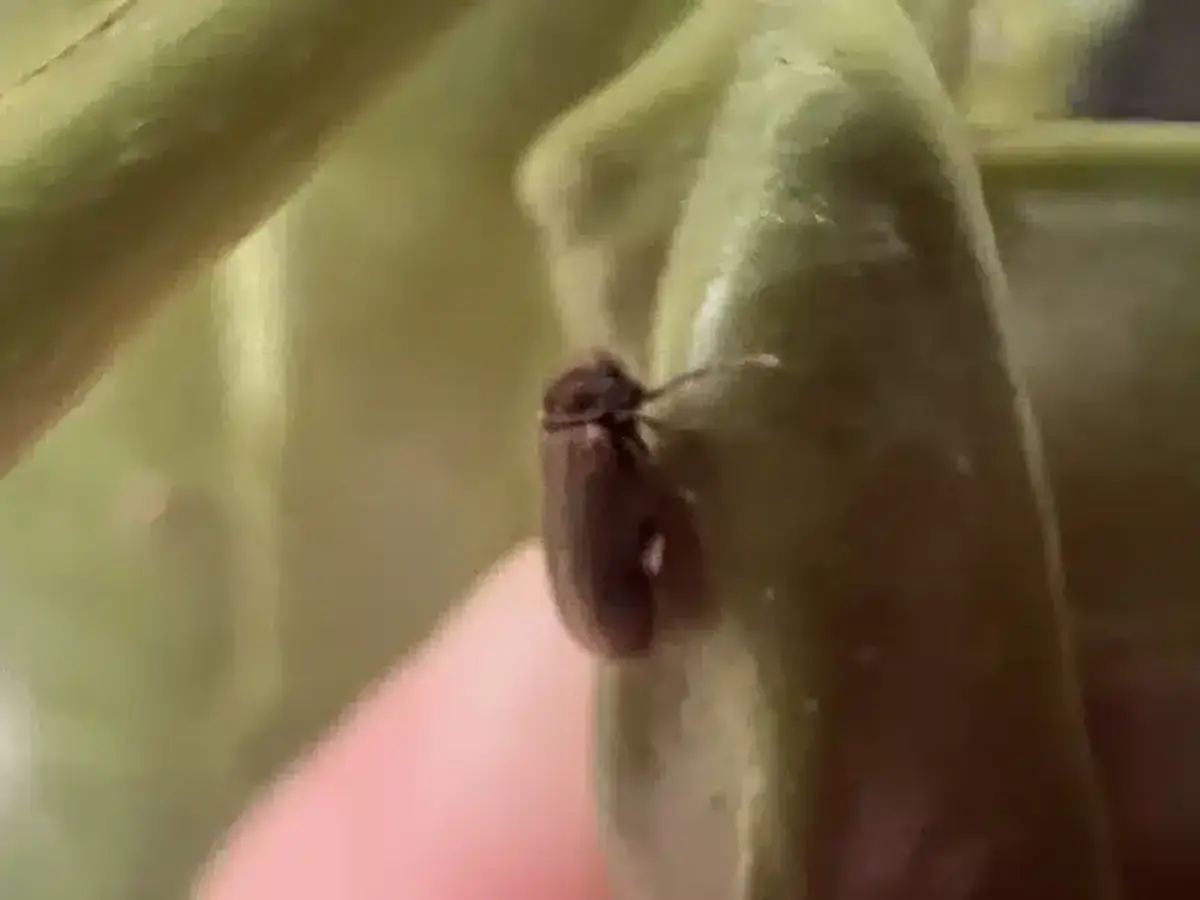
Old House Borer Beetle
The old house borer represents a more serious threat to structural wood. This beetle creates oval exit holes ranging from 1/4 to 3/8 inch in diameter. Unlike other wood borers, the old house borer produces coarse cylindrical pellets mixed with boring dust.
What makes this pest particularly concerning is that borer larvae can develop for 2 to 15 years inside structural wood. Homeowners sometimes hear clicking or rasping sounds from infested timbers - a sign that larvae are actively feeding inside the wood.

Furniture Beetles
Furniture beetles, part of the anobiid family, commonly infest furniture as well as structural elements. These beetles create exit holes measuring 1/16 to 1/8 inch in diameter and produce gritty frass that forms small piles outside the holes.
The larval stage of furniture beetles can last 1 to 10 years, making infestations particularly challenging to detect early. They thrive in areas with 13 to 30 percent moisture content, which explains why they’re often found in crawl spaces and attics.
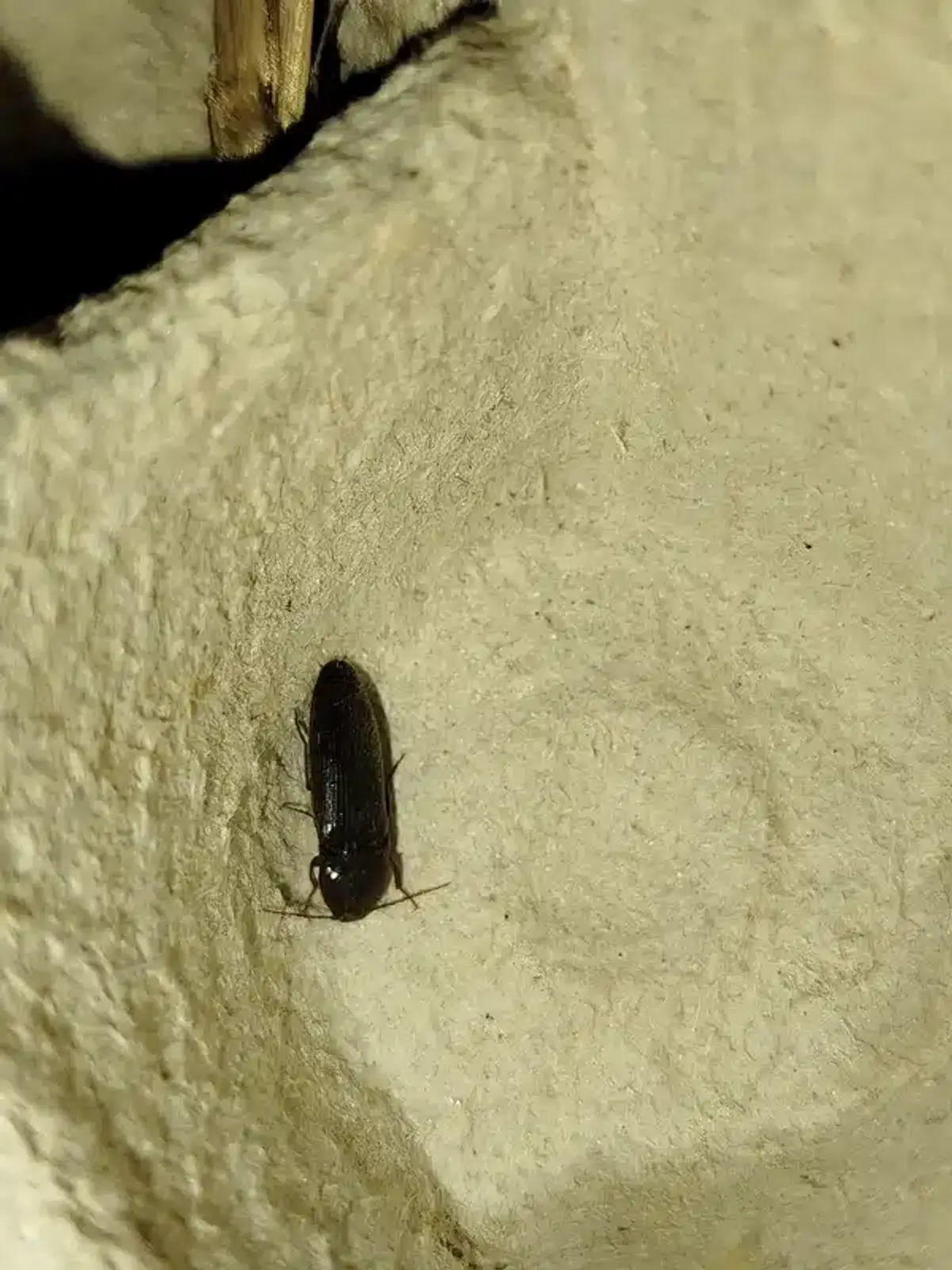
Identifying Wood Boring Beetle Damage
Recognizing beetle damage early can save you thousands in repair costs. The signs vary depending on the species, but certain indicators consistently point to an active infestation.
Beetle Exit Hole Characteristics
Each beetle species creates distinctive exit holes. According to the University of Florida’s Institute of Food and Agricultural Sciences, these holes provide the most reliable identification method for determining which beetle species you’re dealing with.
Round exit holes made by powderpost beetles appear clean and precise. Furniture beetles create similar round holes but slightly larger. The old house borer produces oval-shaped emergence holes that are significantly bigger than other species.
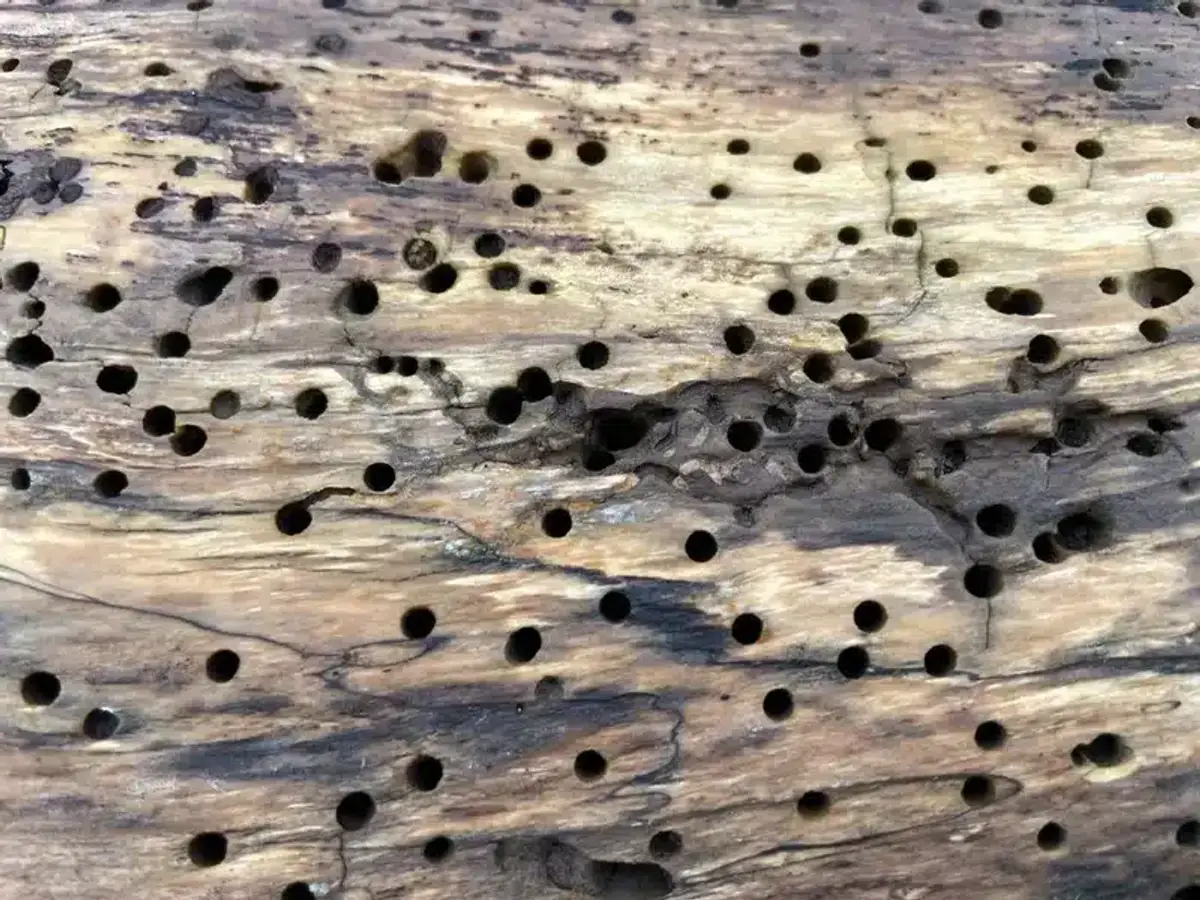
Frass and Boring Dust Indicators
The frass outside exit holes tells an important story about beetle activity. Fresh frass indicates ongoing infestation, while old, settled powder suggests past activity that may have stopped.
Different beetle species produce distinctly different frass textures. Powderpost beetles leave fine, flour-like powder that feels smooth between your fingers. Furniture beetles create grittier frass with small cylindrical pellets mixed in.
Beetle Species Identification Guide
| Feature | Powderpost | Old House Borer | Furniture Beetle |
|---|---|---|---|
| Exit Hole Size | 1/32 - 1/16 inch | 1/4 - 3/8 inch | 1/16 - 1/8 inch |
| Hole Shape | Round | Oval | Round |
| Frass Type | Fine, talc-like | Coarse pellets | Gritty with pellets |
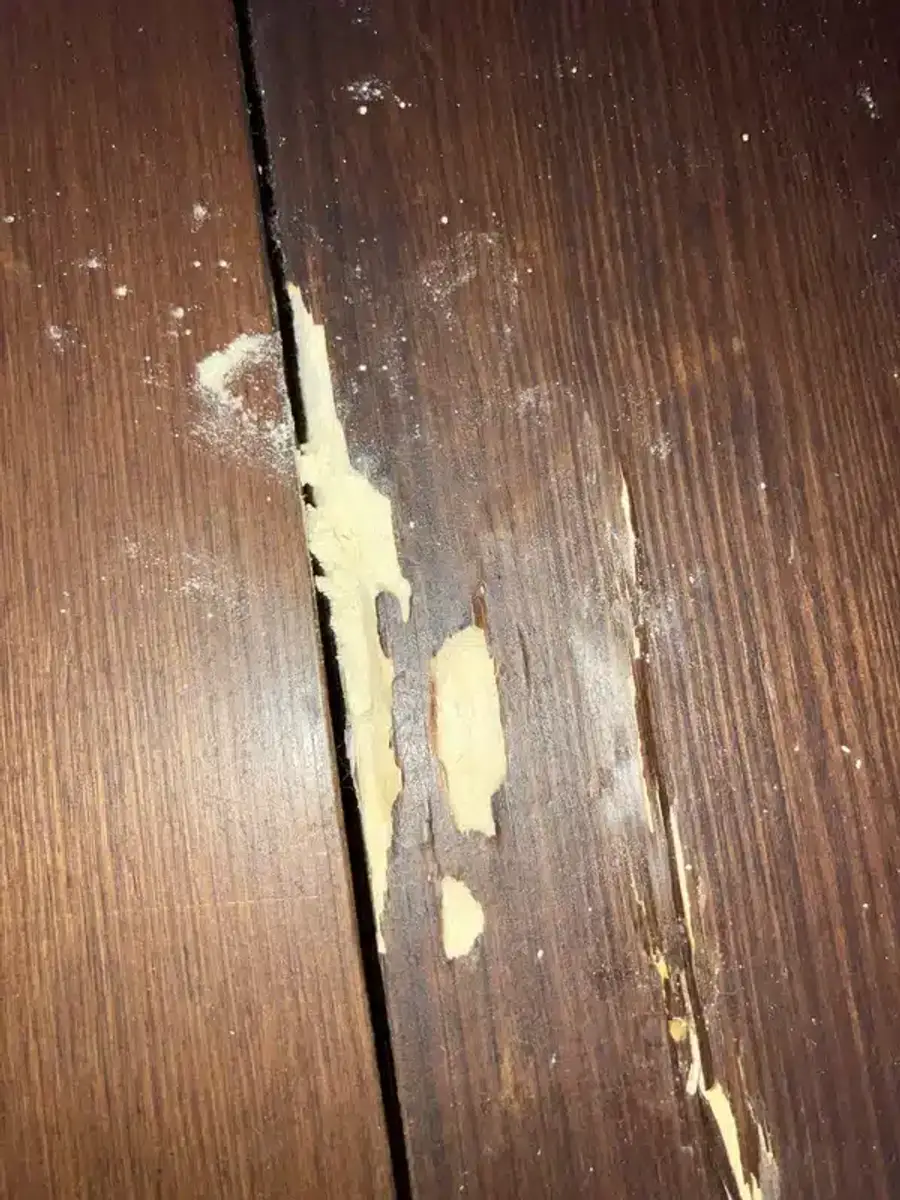
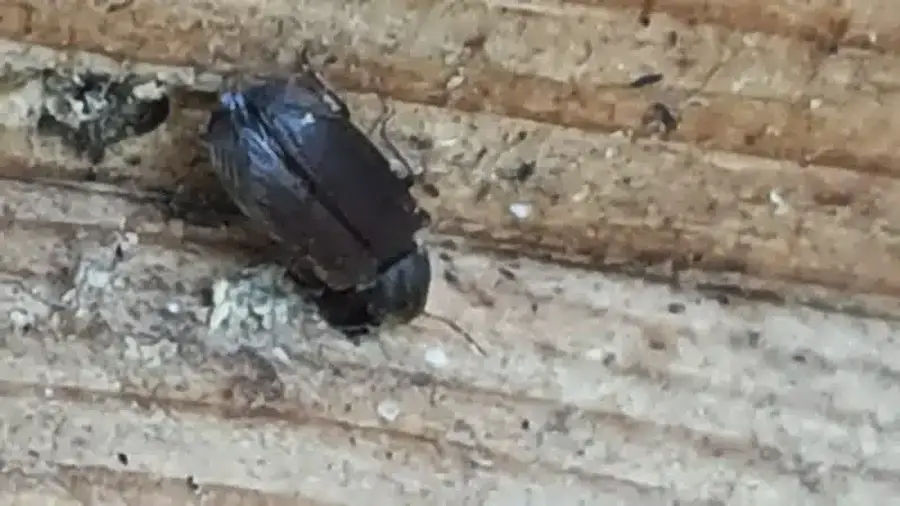
Wood Preferences and Moisture Requirements
Understanding which woods attract specific beetle species helps predict where infestations might occur. Moisture content plays a crucial role in beetle survival and reproduction.
Hardwood vs Softwood Preferences
Most powderpost beetles target hardwood species exclusively. They prefer open-pored woods like oak, hickory, and mahogany because these provide easy access for egg-laying. Beetles usually attack the sapwood rather than the heart wood, since sapwood contains more nutrients.
The old house borer takes a different approach, preferring softwood species like pine, spruce, and fir. This preference makes it a particular threat to structural framing in many homes across the Mid-Atlantic region.
Critical Moisture Levels
Wood moisture content determines whether beetles can successfully establish an infestation. Research from NC State Extension shows that beetle activity drops sharply when lumber moisture falls below 14 percent.
Beetles prefer wood with 15 to 25 percent moisture content for optimal development. In our family business’s 50+ years serving the DMV area, we’ve consistently found that controlling moisture levels effectively prevents most re-infestations.
What does the science say?
According to NC State Extension research, wood moisture content acts as the primary limiting factor for beetle reproduction and development. Laboratory studies demonstrate that beetle activity drops to near zero when lumber moisture falls below 14 percent, making moisture control the most effective long-term prevention strategy for wood boring beetle infestations.
Beetle Life Cycle and Development Timeline
Wood boring beetle development takes much longer than most homeowners expect. This extended timeline means damage accumulates slowly but steadily over years.
Adult beetles emerge from infested wood and immediately seek mates. Females lay eggs in wood pores, cracks, or crevices in unfinished wood surfaces. The larva stage does all the actual wood damage, tunneling through the wood and consuming cellulose.
Development speed varies dramatically by species and environmental conditions. Powderpost beetles complete their lifecycle in 6 months to 4 years, while furniture beetle larvae feed for 1 to 10 years. Old house borer larvae typically develop for 3 to 6 years in Mid-Atlantic humidity conditions.
Structural Damage Potential
Wood boring beetles rank second only to termites in economic impact on seasoned lumber. The damage they cause often goes unnoticed until structural integrity becomes compromised.
Beetle damage wood furniture as well as load-bearing members like joists and sill plates. The tunnels follow the wood grain, creating galleries that weaken the wood’s structural capacity. In severe cases, prolonged infestations can rival termite damage in their ability to compromise structural wood.

The insidious nature of beetle damage means it often remains hidden under a thin shell of wood. By the time exit holes become visible, significant internal damage has already occurred.
Distinguishing Beetle Damage from Termite Activity
Homeowners frequently confuse wood boring beetle damage with termite activity. Learning to tell the difference helps you choose the right treatment approach and avoid unnecessary costs.
Beetle infestations leave clean, round or oval exit holes with no mud or earth material. The frass appears as clean wood powder or pellets. Termite pellets, in contrast, look different and indicate drywood termite activity rather than beetle damage.
Termite damage creates irregular galleries lined with mud-like material. Subterranean termites build distinctive mud tubes to protect themselves while traveling between soil and wood. Beetles never create these mud structures.
Understanding these differences prevents misdiagnosis and ensures you get the right treatment. Our registered technicians often see homeowners who’ve spent money on the wrong type of pest control because they misidentified the pest.
Professional Inspection Techniques
Proper inspection requires systematic examination of all wooden elements in and around your home. Start with a visual survey of exposed joists, subflooring, hardwood flooring, and furniture.
Note the size and distribution of any holes you find. Clean away any powder or frass, then check the same areas 24 to 48 hours later. Fresh frass indicates active infestation and requires immediate attention.
Use a moisture meter to check wood moisture content. Wood registering above 14 percent moisture needs corrective drying to prevent continued beetle activity. Probe suspect areas with an awl or pick hammer to gauge the extent of internal damage.
Treatment Options for Active Beetle Infestations
Several treatment approaches can eliminate active beetle infestations. The best choice depends on the extent of damage, beetle species, and your specific situation.
Wood Removal and Replacement
Removing and replacing infested wood provides the fastest, most certain cure when infestation remains localized. This approach works particularly well for furniture or isolated structural members.
Before removing wood, inspect adjacent areas carefully to ensure the infestation hasn’t spread. Sometimes what appears localized actually extends into other pieces of wood or structural elements.
Borate Treatments
Borate-based treatments like Bora-Care and Tim-bor offer effective control for many beetle species. These materials penetrate wood and remain toxic to insects for years after application.
University of Maryland Extension research shows borate treatments work best on wood with at least 15 percent moisture content. The treatment diffuses through the wood, creating a protective barrier against future infestations.
However, surface penetration remains limited to less than 1/4 inch in most cases. This means borate treatments excel at preventing re-infestation rather than killing larvae deep within wood.
Fumigation for Severe Cases
Fumigation provides the only 100 percent knockdown option for extensive infestations or old house borer problems. Licensed pest control professionals use sulfuryl fluoride or similar materials to penetrate throughout the structure.
This treatment requires evacuating the home for several days and costs significantly more than other options. However, fumigation remains necessary for whole-house infestations or when structural members throughout the home show beetle activity.
Beetle Prevention Strategies for New Construction
Preventing beetle infestations costs far less than treating active problems. Several proven strategies protect new lumber and renovation projects from future beetle issues.
Kiln-drying lumber to appropriate moisture levels kills all life stages of wood-boring insects before installation. Specify kiln-dried lumber for all structural and decorative applications where possible.
Seal exposed wood surfaces with varnish, paint, or shellac to deny beetles access to egg-laying sites. Adult beetles require bare wood pores or cracks to successfully lay their eggs.
Control moisture in crawl spaces and basements using dehumidifiers and proper vapor barriers. Maintain relative humidity below 60 percent to create conditions unfavorable for beetle development.
Essential Beetle Prevention Steps
- Moisture Control: Keep wood moisture below 14% and maintain crawl space humidity under 60% to prevent beetle reproduction
- Surface Protection: Seal all exposed wood with paint, varnish, or shellac to block access to egg-laying sites
- Professional Inspection: Schedule annual inspections during May-August when adult beetles emerge most frequently
- Early Detection: Check for fresh frass monthly in crawl spaces, attics, and around hardwood flooring
Special Considerations for Antique Furniture
Antique furniture requires special handling when dealing with beetle infestations. Chemical treatments may alter valuable finishes or damage historical integrity.
Non-chemical options work best for valuable pieces. Professional freezing treatments expose furniture to temperatures below -20°C for at least 72 hours, killing all life stages without chemical residue.
Heat treatment offers another chemical-free option, raising core wood temperature to 130°F for several hours. Both methods require professional equipment and monitoring to ensure effectiveness without damage.
Furniture finished with lacquer or shellac rarely suffers re-infestation because the finish blocks access to wood pores where females lay eggs.
When Professional Assessment Becomes Essential
Certain situations require professional expertise to avoid costly mistakes or inadequate treatment. Recognizing these scenarios helps you make informed decisions about DIY versus professional intervention.
Exit holes larger than 1/4 inch likely indicate old house borer activity, which requires specialized treatment approaches. Extensive powder in multiple floor systems suggests widespread infestation beyond typical DIY capabilities.
Structural members that sound hollow when probed may have lost significant load-bearing capacity. Professional evaluation determines whether immediate replacement becomes necessary for maintaining structural integrity.
Historic buildings present unique challenges where preservation standards limit chemical use options. Conservation entomologists can recommend treatments that eliminate beetles while preserving historical value.
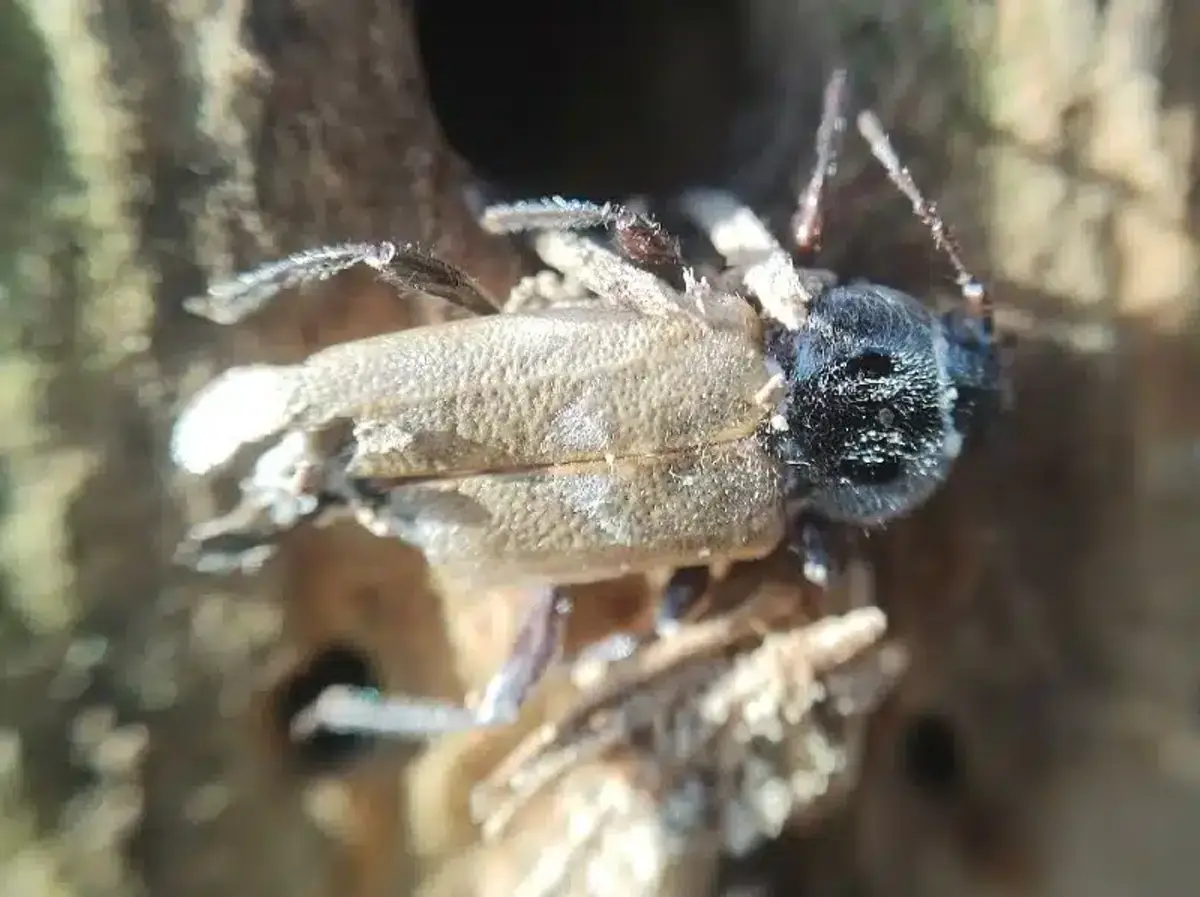
Regional Considerations for the DMV Area
Our warm, humid summers in the Virginia-Maryland-DC region create ideal conditions for wood boring beetle activity. Crawl space wood often maintains the 13 to 20 percent moisture content that beetles prefer.
Coastal areas like Tidewater Virginia and Chesapeake Bay shorelines see particularly heavy anobiid beetle activity due to consistently high humidity levels. Our family business has tracked these patterns across more than five decades of service in the region.
The heating season from November through March often halts beetle activity as indoor heating reduces wood moisture content. This creates natural inspection windows during May through August when adult beetles emerge most frequently.
Wood boring beetles can cause extensive damage when left untreated, but early detection and proper treatment eliminate most problems effectively. Understanding the signs, knowing your options, and acting quickly when you spot evidence protects both your home’s structure and your investment.
Whether you’re dealing with powderpost beetles in hardwood flooring or old house borers in structural framing, the right approach depends on accurate identification and appropriate treatment selection. When in doubt, professional assessment ensures you get the most effective solution for your specific situation.
If you’ve noticed exit holes, frass, or other signs of wood boring beetle activity in your home, don’t wait for the problem to worsen. Contact our experienced team at 703-683-2000 or email us at info@bettertermite.com for a thorough inspection and customized treatment plan.
Frequently Asked Questions
How do you know if you have wood-boring beetles?
+
Look for small, round exit holes in wood surfaces, fine powdery frass around these holes, and listen for clicking or rasping sounds from infested wood. Fresh powder appearing after you clean an area confirms active beetle activity.
How do you get rid of wood borers?
+
Treatment options include removing and replacing infested wood, applying borate treatments to penetrate remaining wood, or fumigation for severe infestations. The best approach depends on the beetle species and extent of damage.
What temperature kills wood-boring beetles?
+
Heat treatment at 130°F core temperature for several hours kills all beetle life stages. Alternatively, freezing below -20°C for at least 72 hours also eliminates beetles without chemical treatments.
What is the best spray for wood-boring beetles?
+
Borate-based treatments like Bora-Care and Tim-bor work best for most beetle species. These materials penetrate wood and provide long-lasting protection against both current and future infestations.
Can wood boring beetles infest living trees?
+
Yes, some species like bark beetles and ambrosia beetles attack living trees, especially stress trees or those weakened by drought. However, most structural wood beetles prefer seasoned lumber rather than living wood.
How long does it take for beetle larvae to develop?
+
Development time varies significantly by species. Powderpost beetles develop in 6 months to 4 years, while furniture beetles take 1 to 10 years. Old house borer larvae typically require 3 to 6 years to complete development.
Do wood boring beetles attack all types of wood?
+
Different beetle species prefer specific wood types. Powderpost beetles target hardwood sapwood, while old house borers prefer softwoods like pine and fir. Moisture content matters more than wood species for most infestations.
Can I prevent wood boring beetle infestations?
+
Yes, prevention works well through kiln-drying lumber, sealing wood surfaces with paint or varnish, and controlling moisture levels below 14 percent. Proper ventilation in crawl spaces and basements also reduces infestation risk.
With five years of hands-on experience in the pest control industry, George Schulz is a registered technician with the Virginia Pest Management Association and a proud third-generation professional in a family business that's been protecting homes for over 57 years. He manages and trains a team of service pros while also leading internal research efforts—recently spearheading a deep-dive review of thousands of documents on pest control materials to hand-pick the most kid and pet friendly, most effective solutions tailored specifically for homes in the DC metro area.
